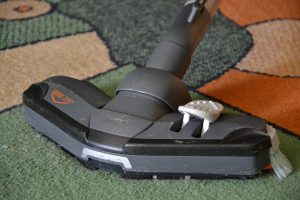Blog
What’s in a House Name (or Number)?

Every home in England has to have one – and you could get in trouble if it isn’t clearly displayed. We’re not talking about a water or electricity supply (although it must be considered fit for human habitation) but about your house name or number.
Here Norfolk removal company Hamiltons Removals, who have been helping people move to houses all across the UK for almost 30 years, look at the history of house names and numbers in this country, and what, if anything, you are allowed to do about changing it.
From Numbers…
The trend for house numbering in the UK first really took hold in large towns and cities, where a lot of houses were built at the same time. Before the 18th century, when the population was smaller, names were enough. However, once homes were built in large numbers, there had to be a quick and easy method of identification, so a numbering system was introduced. This was established by an Act of Parliament in 1765.
Typically, houses on the left side of the street were given odd numbers and houses on the right side even numbers, with the lowest numbers usually nearest to the town centre. However, this hasn’t always the case – some older cul-de-sacs are numbered consecutively. Perhaps the best example of this is Downing Street in London, where the Prime Minister’s official residence is No. 10 and the Chancellor of the Exchequer’s is next door at No. 11.
…to Names
However, the growth of suburban housing, which was accelerated by the rail network, meant that there was a big rise in the number of new homeowners. Numbering wasn’t an option for many of these new suburban houses as they weren’t built in complete streets but one at a time, in line with individual demand. This meant the new class of homeowner had the opportunity to choose their own house name. So, what were the most popular choices?
A Trade or a Previous Use – sometimes people named their houses after their profession, which is why you see so many properties called School House, Mill House, The Old Forge or The Old Bakery. Sometimes the property may have originally been used for that purpose, but it has since been converted into housing as demand for these old trades diminished.
Another Place – before the growth in private housing, the only people who had any say in what their houses were called were the landed gentry, and the names of their stately homes were usually taken from the nearby village.
The new breed of homeowner was happy to continue this principle by using another place name. This could be somewhere local, or hundreds of miles away – giving rise to unlikely combinations, such as Clovelly Cottage, Finchley (North London and Devon are 225 miles apart). Often the borrowed name is from a beauty spot.
The Rural Idyll – many of the most popular house names today have natural themes – such as Rose Cottage, Orchard House, Yew Tree Cottage or The Firs. Some are named after animals and birds, such as Rookery Nook and Badgers Cottage. Often these are chosen by homeowners who have retired to the country, or just because they wanted a pleasant-sounding name.
Recent Crazes – tastes change, and many people choose house names for more recent, cultural reasons. For instance, during the past decade there has been a big rise in the number of homes with Harry Potter themes, or the TV series Poldark and Game of Thrones.
Can I Add a House Name?
The short answer is yes – but only if the local council and Royal Mail say so. You have to stay with your original house number (if you have one) so the emergency services know where to come. However, you are allowed to add a name on top of that, provided no one else has already claimed it.
If the Royal Mail give their approval, you will have to tell the Land Registry, your utility providers and the Electoral Roll. There may be some administrative expense involved. Once all that’s done, you can tell everyone about your new house name.
UK House Removals from Hamiltons Removals
Wherever you want to move to in the England, Norfolk removal company Hamiltons Removals will be able to help. We can offer free online removals quotes – for more details, click here – and you can also book a free video survey with us at a time to suit your own convenience (and which avoids any issues with social distancing).
We can also help you whether if are considering moving to Scotland or Wales. To get in touch, follow this link or call us on 01379 855203 or email us on info@hamiltonsremovals.co.uk.
Self Storage and Spring Cleaning

Here are Hamiltons Removals’ top five tips on fast, effective spring cleaning – and how our Safe N Stored self storage units in the heart of East Anglia can be an essential tool in making the whole process that much simpler.
Go Room by Room
It’s important, when you are spring cleaning, to be as methodical as possible. So, decide when it’s going to be most convenient to do which room, factoring in issues such as home schooling, working from home and which room gets the most use at certain times of the day. Give yourself a time limit – this will help give the whole process a sense of focus and motivation.
Work from Top to Bottom
Although it can be tempting to start at the bottom, it will be counter-productive to start your spring clean by vacuuming the floor, whichever room you are in. However, you can use the appropriate vacuum cleaner hose attachments to remove all the dust and cobwebs from the ceiling and the walls.
Next, dust or wipe down the top surfaces of any furniture and any windowsills. The floors can wait until the very end – that way you can pick up any grime and dirt you have disturbed earlier on.
Protect Yourself
It may seem obvious, but you should check the labels on any cleaning products beforehand – not just so you can be sure you are using them correctly, but also to guard against any potential allergic reactions.
One method of avoiding this problem is to use natural alternatives, such as a steam cleaner. This will get rid of really stubborn stains on microwaves, hard floors, tiles and other surfaces. They operate by using hot water vapour, so there’s no chemical health risk involved.
Don’t forget to wear plenty of protective gear as well, whether it’s a mask, rubber gloves or an apron. These will protect you (and your clothes), particularly if you have a pre-existing medical condition, such as a skin complaint or a respiratory disease.
Get Rid of Everything You Can
One of the biggest problems with spring cleaning is the lack of space. So, use it as a reason to get rid of everything you aren’t likely to use. In the bathroom, this means getting rid of any medicines which are out of date. In the bedroom, get rid of any clothes you aren’t likely to wear, either because they don’t fit you or are out of season (or style). In the kitchen, you should get rid of all the foodstuffs (usually at the backs of cupboards, where they’ve been forgotten about) which are past their ‘use by’ or ‘best before’ date.
Use Self Storage
To spring clean properly, you really need to get into all the nooks and crannies in every room. So why not put larger items into self-storage? This will give you more space to work in and really help to focus your mind. Smaller items, such as winter clothing, can also be put a self-storage unit as you won’t be wearing any of it for at least six months.
If your spring cleaning extends to the garage or the shed, garden tools (including mowers) and other DIY-related bits and pieces can also be put into storage.
Hamiltons Removals – Safe N Stored Storage Units in the Heart of East Anglia
Norfolk removal company Hamiltons Removals has two Safe N Stored sites, at Harleston and Aldeby, which are ideal if you need somewhere to put any of your possessions while you are spring cleaning.
Our Harleston site, which is currently open from 09.15am-17.15pm, has a range of self-storage rooms which can be rented for as little as £65 per month. You can also order a range of packaging materials online from this site. Our Aldeby base is home to self-storage containers from 5’ to 20’, making it ideal for larger items, such as motorhomes, caravans and boats. They are also protected by CCTV and has both secure key fob entry and high security padlocks. Social distancing is in place at both sites.







